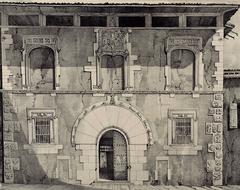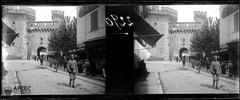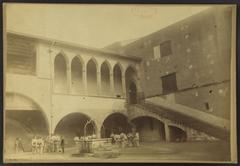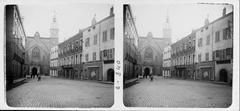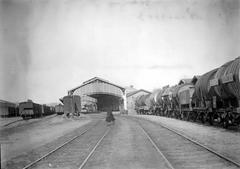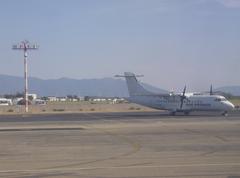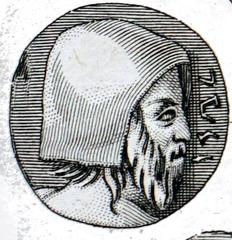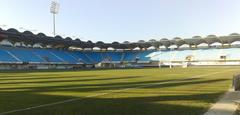Comprehensive Guide to Visiting La Plage Centrale de Canet en Roussillon, Perpignan, France
Date: 24/07/2024
Introduction
Nestled along the scenic Mediterranean coastline, La Plage Centrale de Canet en Roussillon offers more than just a sun-soaked retreat; it is a location steeped in rich history and cultural significance. From its early days as a bustling Roman port to its emergence as a medieval stronghold and modern seaside resort, La Plage Centrale has witnessed a vivid tapestry of historical events. The Roman influence is evident in archaeological finds at Puig Del Baja, showcasing the region’s ancient trade and commerce (Canet Tourisme). Over the centuries, the area evolved from a fortified medieval viscounty to a popular destination for sea bathing, marked by the establishment of the first beach settlement in 1849 and the town’s official classification as a seaside resort in 1909 (Wikipedia). Today, La Plage Centrale is not only a testament to the region’s dynamic past but also a vibrant hub of modern amenities, cultural experiences, and recreational activities. This comprehensive guide will provide detailed information on the best times to visit, historical sites, travel tips, and much more to ensure a memorable trip to this beautiful Mediterranean destination.
Table of Contents
- [Historical Background of La Plage Centrale de Canet en Roussillon](#historical-background-of-la-plage-centrale-de-canet-en-roussillonhistorical-background-of-la-plage-centrale-de-canet-en-roussillon)
- [Early History and Roman Influence](#early-history-and-roman-influenceearly-history-and-roman-influence)
- [Medieval Period and the Viscounty](#medieval-period-and-the-viscountymedieval-period-and-the-viscounty)
- [Transition to Modernity](#transition-to-modernitytransition-to-modernity)
- [Development of Sea Bathing](#development-of-sea-bathingdevelopment-of-sea-bathing)
- [20th Century Expansion](#20th-century-expansion20th-century-expansion)
- [Visitor Information for La Plage Centrale de Canet en Roussillon](#visitor-information-for-la-plage-centrale-de-canet-en-roussillonvisitor-information-for-la-plage-centrale-de-canet-en-roussillon)
- [Visiting Hours and Tickets](#visiting-hours-and-ticketsvisiting-hours-and-tickets)
- [Travel Tips](#travel-tipstravel-tips)
- [Cultural and Historical Significance](#cultural-and-historical-significancecultural-and-historical-significance)
- [Modern Amenities and Attractions](#modern-amenities-and-attractionsmodern-amenities-and-attractions)
- [Ephemeral Beach Clubs and Biblioplage](#ephemeral-beach-clubs-and-biblioplageephemeral-beach-clubs-and-biblioplage)
- [Environmental and Safety Standards](#environmental-and-safety-standardsenvironmental-and-safety-standards)
- [Nearby Attractions](#nearby-attractionsnearby-attractions)
- [FAQ](#faqfaq)
- [Conclusion](#conclusionconclusion)
- [Sources](#sourcessources)
Historical Background of La Plage Centrale de Canet en Roussillon
Early History and Roman Influence
The history of Canet-en-Roussillon, where La Plage Centrale is located, dates back to ancient times. The area was a significant port during the Roman period, serving as a maritime outlet for the nearby town of Ruscino, now known as Perpignan. Archaeological evidence, such as traces of Roman occupation found at Puig Del Baja, indicates that the region was a bustling hub for trade and commerce (Canet Tourisme).
Medieval Period and the Viscounty
In the 9th century, Canet saw the construction of its fortifications and castle, marking the beginning of its prominence in the region. By 1050, under the reign of Gausfred II, Count of Roussillon, the castle was a notable landmark. Over the centuries, the lords of Canet became influential figures, monopolizing sea salt production and owning extensive lands. The Viscounty of Canet was a significant entity from 1322 until the French Revolution, passing through the hands of various kingdoms, including Aragon, Majorca, and France (Canet Tourisme).
Transition to Modernity
The 19th century marked a period of significant transformation for Canet-en-Roussillon. The town began to urbanize, with inhabitants using stones from the castle to pave streets and reclaiming marshes for agriculture. The first school was established in 1837, and by 1858, the railroad reached Perpignan, enhancing connectivity. The tramway, introduced in 1900, linked Canet beach to the Catalan capital in 45 minutes, although it was dismantled in 1953. The town was electrified in 1905, and by 1906, all households had access to drinking water (Canet Tourisme).
Development of Sea Bathing
The concept of sea bathing began to take hold in Canet-en-Roussillon in the mid-19th century. The first beach settlement for bathers was established in 1849 by Louise Lombard. By 1854, municipal laws were in place to regulate bathing suits and designate separate zones for men and women. The town’s first lifeboat station was established in 1888, and by 1909, Canet was officially classified as a seaside resort (Wikipedia).
20th Century Expansion
The 20th century saw further development and modernization of Canet-en-Roussillon. In 1928, the Casino was inaugurated, symbolizing prosperity with its auditorium, dance hall, and gaming rooms. Although destroyed during World War II, it was rebuilt and reopened in 1956, hosting stars like Édith Piaf and The Platters. The 1960s saw the construction of a channel, leading to the establishment of a yachting port. The 1970s brought a surge in tourism with the emergence of campsites, hotels, restaurants, and bars, making Canet beaches a popular destination (Canet Tourisme).
Visitor Information for La Plage Centrale de Canet en Roussillon
Visiting Hours and Tickets
La Plage Centrale is accessible year-round, with lifeguard services available during the peak summer months from June to September. There is no entrance fee, making it a pleasant and budget-friendly option for visitors (Canet Tourisme).
Travel Tips
For those planning a visit, consider using public transport or cycling, as parking can be limited during peak seasons. The town of Canet-en-Roussillon is well-connected by bus services from Perpignan. Additionally, there are plenty of accommodations ranging from hotels to campsites nearby (Sandee).
Cultural and Historical Significance
La Plage Centrale de Canet en Roussillon is not just a beach but a testament to the town’s rich history and cultural evolution. The beach offers picturesque views of the port’s breakwater and the majestic Pyrenees mountains, making it a significant landmark in the region. Despite its popularity, the beach is known for its spaciousness and is not typically overcrowded, providing a serene environment for visitors (BeachAtlas).
Modern Amenities and Attractions
Today, La Plage Centrale is equipped with numerous amenities, including lifeguards, public restrooms, showers, and changing rooms. The beach is also dog-friendly, provided pets are kept on a leash. Activities such as swimming, sunbathing, beach volleyball, and water sports like windsurfing and kiteboarding are popular among visitors (Sandee).
Ephemeral Beach Clubs and Biblioplage
Every summer, ephemeral beach clubs set up along the Canet-en-Roussillon coastline, offering top-quality service and moments of relaxation. These establishments, which double as restaurants and bars, provide deckchairs for lounging under umbrellas. Additionally, the Biblioplage, an ephemeral library, offers over 150 books, newspapers, and magazines free of charge, making it a unique cultural attraction on the beach (Canet Tourisme).
Environmental and Safety Standards
La Plage Centrale de Canet en Roussillon is recognized for its environmental and safety standards. The beach has been awarded the European Blue Flag, indicating its high standards of water quality, safety, and environmental management. The shallow waters and calm surf make it an ideal spot for families, particularly for children who can safely play in the water (France Voyage).
Nearby Attractions
In addition to the beach, visitors can explore historical sites such as the Château de Canet and the nearby town of Perpignan, which offers a rich cultural experience with its museums, markets, and historical landmarks (Canet Tourisme).
FAQ
What are the visiting hours for La Plage Centrale de Canet en Roussillon?
The beach is accessible year-round, with lifeguard services available from June to September.
How much are tickets to La Plage Centrale?
There is no entrance fee to access La Plage Centrale.
Are there any historical sites near La Plage Centrale?
Yes, visitors can explore the Château de Canet and the nearby town of Perpignan.
Conclusion
La Plage Centrale de Canet en Roussillon is a destination that seamlessly blends historical charm with modern amenities, making it a must-visit for travelers seeking both relaxation and cultural enrichment. The beach’s rich history, from its Roman origins to its development as a prominent medieval and modern seaside resort, offers a unique backdrop for visitors (Canet Tourisme). Today, it boasts a range of activities, from water sports and beach volleyball to exploring ephemeral beach clubs and the Biblioplage. Environmental and safety standards, including the prestigious European Blue Flag, ensure a clean and safe environment for all visitors (France Voyage). With nearby attractions such as the Château de Canet and the Oniria Aquarium, as well as a variety of dining and accommodation options, La Plage Centrale caters to all types of travelers. By following the tips and insights provided in this guide, visitors can maximize their experience and fully appreciate everything this remarkable destination has to offer.

